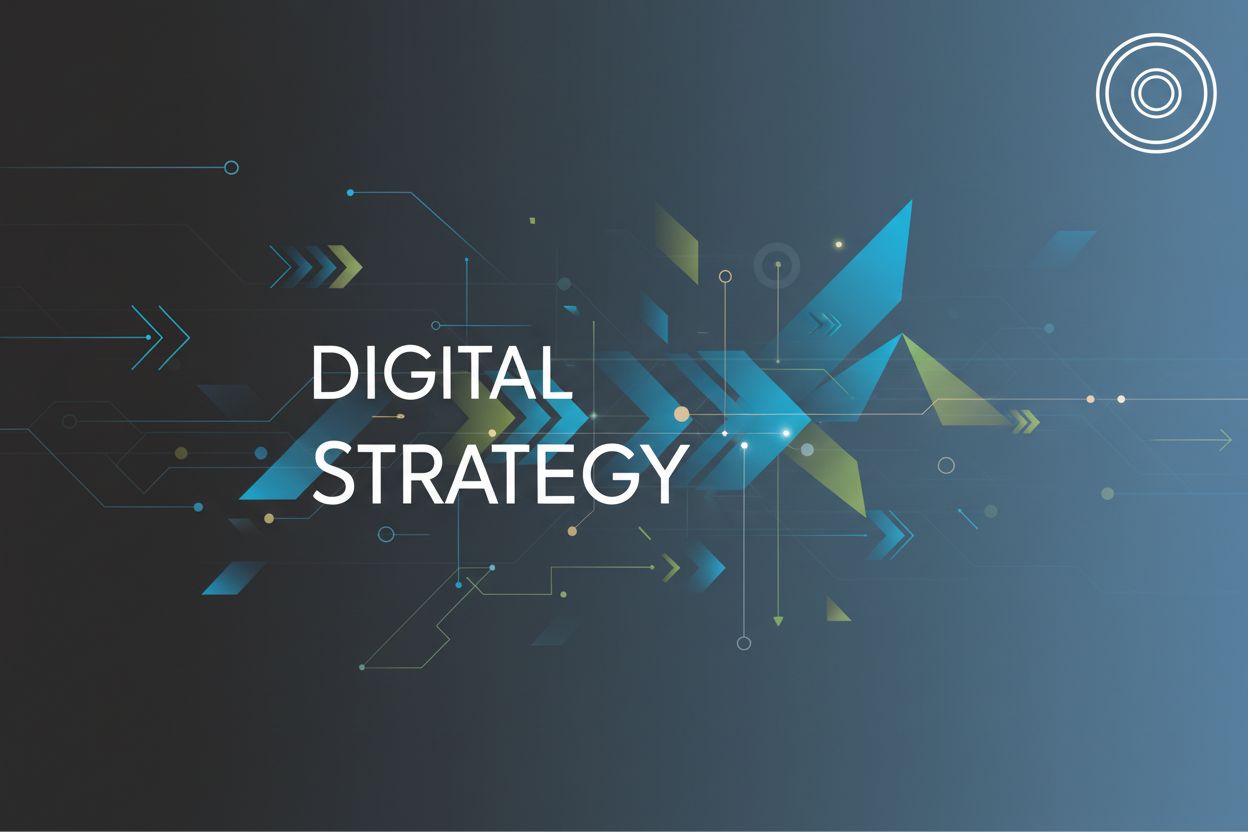The Impact of Web3 on Digital Ownership and Monetization Models
TL;DR
Understanding the Web3 Revolution: A Shift in Paradigm
Web3, huh? It's not just some buzzword floating around; it's a whole new internet brewing. (People are talking about Web3. Is it the Internet of the future ... - NPR) Are you ready to dive in?
At its core, Web3 represents a fundamental shift in how the internet operates, moving away from centralized control towards a more decentralized, user-centric model. It's built upon technologies like blockchain, which enables peer-to-peer interactions and verifiable ownership, and its primary goal is to empower individuals by giving them greater control over their data, digital assets, and online identities. Think of it as the internet evolving to give more power back to us, the users.
- The core idea? User empowerment. You're not just a consumer; you're an owner. This shift is kinda huge because it flips the script on how things usually work online.
- Web 2.0? That's the internet we know now. Big companies hold the keys. Web3 wants to change that, giving you more privacy and control over your info. It is a big difference, honestly.
- Traditional business models could be in for a shock. Imagine cutting out the middleman in, say, healthcare. Patients could directly control their medical records and share them securely with doctors, changing how the whole system operates.
- Brand-consumer relationships are gonna get a makeover too. Think more direct engagement, more community, and brands that feel more like collaborators than dictators. It's all about building trust and genuine connections.
Blockchain is like the foundation, right? It ensures that everything is transparent.
- Blockchain technology is the backbone. It's like a super secure, shared ledger that everyone can see. Immutability? That means once something's on the blockchain, it's there forever. This immutability is crucial because it creates a permanent, tamper-proof record of transactions and ownership, fostering trust and security. It means you can be sure that your digital assets are truly yours and that records can't be altered without consensus.
- nfts are like digital collectibles with proof of ownership. Think of them as unique digital assets. For example, in the retail world, nfts can represent ownership of limited-edition sneakers or exclusive merchandise. An nft is essentially a unique token on a blockchain that points to a specific digital item, proving that you are the owner of that item.
- daos are where it gets really interesting. Imagine a company run by its community, not a ceo. daos use smart contracts to automate decision-making, ensuring transparency and fairness. Smart contracts are self-executing contracts with the terms of the agreement directly written into code. In a dao, they automatically carry out decisions made by the community, like distributing funds or approving proposals, without needing a central authority.
- Web3 applications are designed to work together seamlessly. It's like lego blocks. You can combine different apps and services to create something entirely new. For instance, a decentralized social media platform could integrate with a decentralized identity system, allowing users to log in with their existing digital identity and control who sees their posts, all without a central server.
Here's a simple flowchart visualizing how these technologies interact:
Creators are the rockstars of Web3, really. They're getting the chance to make a living doing what they love, without needing a record label or a big studio breathing down their necks.
- Web3 lets creators directly monetize their work. No more giving half your earnings to platforms.
- Removing intermediaries means more money in the creator's pocket. They set their own prices, engage directly with fans, and build sustainable businesses.
- Fan engagement is getting a serious upgrade. Think exclusive content, community tokens, and direct input into the creative process. It's a two-way street, not a one-way broadcast.
- We're already seeing creators launch successful Web3 projects. Musicians are releasing albums as nfts, artists are selling digital artwork directly to collectors, and writers are building communities around their work.
In the next sections, we'll explore digital ownership and then monetization models.
Reshaping Digital Ownership: From Renting to Owning
Okay, so you're telling me I can actually own something online now? Not just rent it from some mega-corp? That's the promise of Web3, and it's kinda a big deal.
Think about it: your photos on Instagram, your tweets, your game progress in Fortnite. Do you really own them? Nope. They live on someone else's server, and they can take it all away if they feel like it. It's like renting a house – you can decorate, but you don't own the bricks or the land.
- Centralized platforms are the gatekeepers. They decide what you can post, what you can see, and even whether you can access your account tomorrow. It's their world, we just live in it... or rent in it, more like.
- Digital assets lack portability. Try taking your in-game skins from one game to another. Can't do it, right? They're locked into that specific platform. It's like having a loyalty card that only works at one specific store.
- Censorship and deplatforming are real threats. Just ask anyone who's had their account suspended or their content removed. Suddenly, poof! Your digital life vanishes. It's a scary thought, honestly.
- And let's not forget monetization. Creators often get a tiny slice of the pie, with platforms taking a huge cut. It's like working hard to build something, only to have someone else pocket most of the profits.
Web3 flips this whole thing on its head. It's about putting you in control, giving you true ownership and the ability to move your digital assets around as you please. finally!
- nfts are like digital deeds. They prove you own something, whether it's a piece of art, a song, or even a virtual plot of land. Think of it as a certificate of authenticity for the digital world. As mentioned before, nfts are unique tokens on a blockchain that represent ownership of an asset, linking the digital item to the token holder.
- Decentralized storage keeps your data safe. Instead of relying on one company's servers, your data is spread across a network. This makes it much harder to censor or lose your stuff.
- Self-sovereign identity puts you in charge of your personal data. You decide who gets to see what, and you can revoke access at any time. This is achieved through technologies like decentralized identifiers (dids) and verifiable credentials, which allow you to control your digital identity and selectively share verified information without relying on a central authority.
- And get this: fractional ownership is becoming a thing. Imagine owning a piece of a famous painting or a share in a racehorse. Web3 makes it possible. Tokenization allows assets to be divided into smaller, tradable units, making high-value items accessible to a wider range of investors.
So how does this ownership thing actually work?
Look at digital art. Artists are selling their work as nfts, cutting out the galleries and auction houses. Gamers are earning crypto by playing games, and they can trade their in-game items on open marketplaces. Musicians are releasing songs as nfts, giving fans a chance to own a piece of their favorite artists' work.
Web3 isn't perfect, of course. It's still early days, and there are challenges to overcome. But the idea of owning your digital life, rather than just renting it, is a powerful one.
Next up, let's dig into digital collectibles.
Revolutionizing Monetization Models: New Revenue Streams in Web3
Okay, so, money makes the world go round, right? But what if you could be the one spinning it, not just watching? Web3 is trying to make that happen, changing how we make money online.
Let's face it, the old ways of making money online can be kinda… lame.
- Advertising-based models? Annoying, right? Pop-up ads, banners flashing everywhere – it's like the internet threw up on your screen. Plus, you're basically selling your eyeballs to advertisers, and they get rich while you get a headache.
- Subscription models are a pain, too. You sign up for something, forget about it, and suddenly you're paying for a service you don't even use. Try cancelling some of those subscriptions - it can be like pulling teeth, honestly.
- Transaction fees? Don't even get me started. Every time you buy something online, some big platform takes a cut. It adds up, and it's not exactly fair to the creators or the customers.
Web3 is trying to fix this. The idea is to make things more fair, more transparent, and more… well, fun. It's about giving power back to the people, not just the big corporations.
So, how does Web3 actually change things? Here's where it gets interesting:
- Tokenization is like creating your own digital currency. You can sell tokens to give people access to your content, your community, or even a say in how things are run. Think of it as a digital membership card with perks.
- Decentralized marketplaces cut out the middleman. Buyers and sellers connect directly, without some big platform taking a huge commission. It's like a digital farmers market, where you can support creators directly.
- Microtransactions make it easy to pay for just what you use. Instead of a monthly subscription, you can pay a tiny amount for a single article, a song, or even just a few minutes of someone's time. It's like paying for what you actually consume, not a bunch of stuff you don't.
- Staking and yield farming are like putting your crypto to work. You can earn rewards by helping to secure decentralized networks or providing liquidity to decentralized exchanges. Staking involves locking up your cryptocurrency to support a blockchain network's operations and earn rewards, while yield farming is a more complex strategy of lending or staking crypto assets to generate high returns. Both carry risks, of course.
Okay, but how does this actually work in the real world?
Imagine a musician releasing their album as nfts. Fans can buy the nfts, get access to exclusive content, and even earn a share of the royalties. It's like owning a piece of your favorite artist's work. Or think about a social media platform that rewards users for creating and curating content. The more popular your posts, the more tokens you earn. It's like getting paid to be yourself online.
Web3 isn't just about making money, though. It's about building communities, creating new forms of ownership, and giving people more control over their digital lives. It's still early days, but the potential is huge.
So, what's next? Well, we're gonna dive into challenges and opportunities for brands in the Web3 Era.
Challenges and Opportunities for Brands in the Web3 Era
Brands tiptoeing into Web3? It's like showing up to a party where the rules are still being written on the back of a napkin...
Okay, so nfts. Seems every brand is trying to figure them out. But it's not just about slapping a logo on a digital image and calling it a day, is it? The real magic is in creating unique experiences for your customers. Like, imagine a coffee shop chain that gives nft holders exclusive access to new blends or early-bird discounts. Or a clothing brand using nfts to verify authenticity and combat counterfeiting. That's actually useful, right?
- Building a decentralized community around your brand can be super powerful. Think of it as leveling up your customer loyalty program. Instead of just points, people get tokens that give them a say in what you do. You can use daos for this, letting your community vote on new products, marketing campaigns, or even charitable donations. It's like turning your customers into co-owners, even if just a little bit. It does takes some getting use to though.
- Don't be afraid to experiment with new monetization models. Forget relying solely on ads or subscriptions. What about microtransactions for exclusive content? Or staking programs that reward loyal customers with crypto? The possibilities are pretty wild, honestly.
- It's all about positioning your brand as a leader in the Web3 space. Be transparent, be authentic, and be willing to learn. The Web3 community can smell corporate BS a mile away.
So, how does this actually work ?
Think about a cosmetics brand creating nfts that unlock virtual makeup looks in the metaverse. Or a sports team offering nfts that grant access to exclusive meet-and-greets. The key is to make it valuable, make it fun, and make it relevant to your brand. If you don't, well, you've just wasted everyone's time.
The web3 world is still kinda the wild west... But for brands willing to get a little adventurous, the opportunities are huge.
The Future of Digital Ownership and Monetization with Web3
Web3, huh? It's been quite the ride exploring how it's shaking up digital ownership and monetization. But where's it all heading? Let's gaze into our crystal ball, which is probably made of blockchain, come to think of it.
- Expect to see a surge in decentralized tech adoption. It's not just crypto nerds anymore; mainstream businesses are starting to sniff around, you know? From supply chain management to voting systems, decentralization is gonna worm its way into, like, everything.
- The metaverse? Yeah, it's still clunky, but don't count it out. Virtual economies are gonna explode, with people buying, selling, and trading digital assets like they're going out of style. Imagine buying a virtual plot of land and actually making money off it. Weird, but possible.
- Web3 won't stay separate for long. It's gonna start blending with what we already know and use. Think your regular e-commerce store, but with crypto payment options and nfts for loyalty rewards. It's about adding Web3 elements to existing models, not replacing them entirely.
- And yeah, Web3 could change society. It could lead to more transparent and democratic systems. Imagine daos running local communities or blockchain-based voting systems that are actually secure. It's a long shot, maybe, but the potential is there.
So, what should brands do to get ready for all this?
- First, get educated. Seriously. Send your team to Web3 workshops, hire some blockchain consultants, and start playing around with the tech yourself. You can't sell nfts if you don't understand em, right?
- Experiment! Don't be afraid to launch a small Web3 project, even if it fails. It's better to learn from your mistakes now than to get left behind later. Maybe try tokenizing your loyalty program or creating a dao for your community.
- Partner up. Find some Web3 experts who know their stuff and can guide you through the process. There's a lot of scams and snake oil salesmen out there, so do your research.
- Most importantly, embrace the ethos of Web3. It's about decentralization, community, and transparency. If you're just trying to make a quick buck, people will see right through you.
Web3 is more than just a trend; it's changing the game. Brands have a chance to jump in and make something awesome, but they gotta be smart about it. It's all about community, transparency, and building stuff that matters. The future is decentralized, and you gotta be ready. Or, you know, don't. But you'll probably regret it later.








